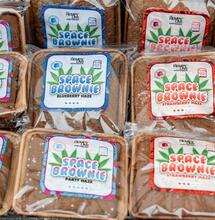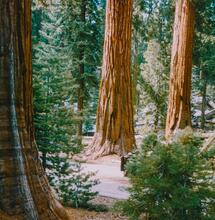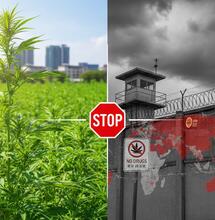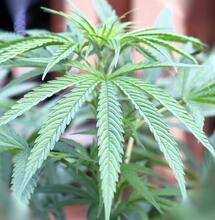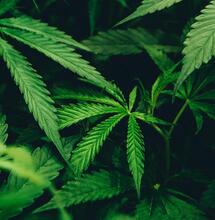What’s the Best Time to Grow Cannabis?
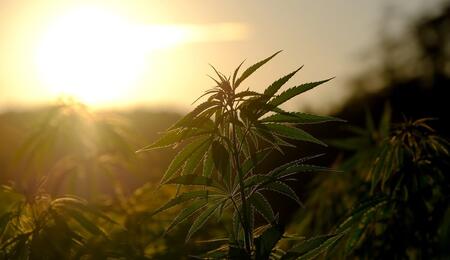
When you cultivate cannabis outside in the garden or in nature, the plant follows a natural rhythm of growing, and benefits from exposure to natural elements such as the sunlight. Plant cannabis in the spring or summer and harvest in the fall — that would be following the natural cycle. However, if you don’t have access to a yard, or if outdoor growing is not permitted where you live, then you must grow indoors. This would require replicating the optimal growing conditions for your cultivar and adjusting the process to a grow calendar.
For most cannabis cultivars, the growing occurs in the summer months and concludes in the fall. Most cultivars thrive in warm climates. An example would be sativas that like plenty of sunshine and some humidity. Then, there are some other specifics. For instance, indicas tend to grow into shorter, bushier plants, and they usually flower faster than sativas. The longest flowering time is seen in equatorial sativas, but if they are planted too far north or south, they might not survive long enough to yield.
Generally, cannabis is a very adaptive plant and can quickly adjust to local climates. Part of the reason is that over the years, farmers and breeders have engineered strains that are very well suited for the local environment where they’re grown. Suppose a crop is not exposed to its ideal grow conditions, such as recommended temperature range or humidity level. In that case, it will affect how much pounds of weed the plant gives and even the quality, but you can still collect something from that plant.
When you time well all steps in the growing process, starting from germination and all the way to when to harvest, it increases the chances of growing healthier plants that produce higher-quality buds.
What’s the Best Month to Plant Cannabis?
In the northern hemisphere, growing cannabis can begin as early as March given that the weather is warm enough. And it can begin as late as the month of May. Cannabis plants will take the summer period to grow and they will eventually flower somewhere around September. Often called Croptober, October is usually the month to harvest, although sometimes the harvest can also occur as late as November.
Sometimes when the warm weather is late to start, plants can be seeded indoors before they are taken outside. This would require adjusting the temperature and humidity of the grow room and regulating lighting schedule among other things.
In the southern hemisphere, the planting would begin somewhere between September and November, and conclude with harvesting between March and May.
In tropical regions, it is possible to harvest outdoor cannabis throughout the whole year.
The ideal growing season would be subject to many factors, including temperature, altitude, air humidity, rainfall, and so forth. Growing outdoors also carries other risks such as handling garden pests or grazing animals. But it’s the most natural way to grow cannabis.
What’s in a Plant Lifecycle?
It may take anywhere between 5 and 8 weeks for your cannabis plants to go from germination through flowering and harvest. That depends very much on what strain is being grown and where it is grown.
The health of the plants and the quality of buds yielded in the end can be greatly affected by what you do in each stage of the growth process or each part of the plant’s life cycle.
The seasons for growing cannabis would differ by location. As is the case with plenty of other crops, homegrowers and farmers typically plant as soon as the weather is warm enough outside and the days are longer. Plants benefit greatly from the extra exposure to sunshine in the summer months.
Normally, the environmental conditions are not the same everywhere. For example, California has warmer growing seasons where planting can start early and harvest can be done later. It would differ from regions such as New England where the growing season is typically shorter.
Some cannabis cultivars are photoperiod, which means they are photosensitive and react to the amount of light they receive. If they don’t get sufficient light, it will negatively affect the yield and quality of the crops. That being said, timing the outdoor planting of your cannabis plants is of utmost importance.
One of the most important moments in the life cycle of cannabis plants is when they switch from vegetation to flowering. This happens when the days become shorter and the nights longer. The prolonged hours of darkness stimulate the plants to flower.
However, some cultivars are auto-flowering. In other words, they are not as sensitive to light, and they will switch from vegetative to flowering stage automatically. This makes them easier to handle and are recommended for novice growers. You can grow auto-flowering cannabis any time of the year as long as you live in climate where there is no frost and the plants can receive at least 10-12 hours of sunlight.

Seasons of the Year and Marijuana Grow Stages
When you grow cannabis, it’s important to understand that the process takes place in stages, and for the plant to develop in an optimal way there is something to do at each of those stages. Each growth stage also coincides with a certain time of the year.
Early spring is for germination
Germination marks the start of the life cycle of your cannabis plant, given that you’re growing from seed. It takes around a week for the seed to break through the soil and show its sprout. The best time of the year to germinate seeds is around the spring equinox.
Spring and early summer is about taking care of the seedlings
Seedling is when the plant is very young and gentle to handle. Not all seedlings will succeed after the first few days or weeks, so it’s good to germinate more seeds than you actually need just in case. In this stage, the plant forms the first fan-shaped leaves, but it still hasn’t developed strong roots. Therefore, it doesn’t need too much water, but it does need a lot of light, such as 16 hours of light a day.
Many growers, regardless if they live in warmer or colder climates, choose to tend their seedlings indoors at the beginning, keeping them safe from pests or infection. They take out the plants when they are at least 6 inches tall and when they look vigilant enough to survive the outdoors.
Summer and early fall is about vegetation
Vegetation is one of the longest periods of the life cycle of cannabis plants. It’s another formative stage where the plants grow taller and develop more branches and more fan leaves as well as you can see where the bud sites would be. Plants will benefit from extra nutrients and exposure to light. Again, 16 hours of ligh a day is preferable, including 5-6 hours of direct exposure to sunlight.
The early days of vegetation are the best time to do some topping and training of the plant, thus giving more structure to your growth. Training also ensures that all parts of the plant receive equal amounts of energy and light. During vegetation, plants also show their sex organs and you can distinguish between male and female cannabis. If there are males in the garden it’s important to move them away from the females.
Fall is for flowering and harvest
Finally, the fall season is about the closure of the plant’s life cycle. By this stage, the cannabis plants are fully formed and their colas need to be monitored closely to determine when would be the perfect time to collect them. During this period, it’s sufficient that plants receive 12 hours of light daily.
The ideal time to start the harvest is around six weeks into flowering. At this point, the hairy pistils (which are the female sex organs) change their color from white to brown, and that’s a major signal that the plants are ripe enough to do the harvest. You don’t need to wait for all pistils to switch before you start taking off the buds. You can start slowly once you see that more than half of the pistils have turned brownish. Timing is everything.
Final Words
Similar to other crops, the best time to plant cannabis is around early spring. If you grow outdoors, the plants will be ready to harvest by fall. The warmer the climate, the more time it may take for the flowers to ripen, but that could also mean heavier colas and yielding more fruits than the usual.
Even if you don’t grow outdoors, you can replicate the growing conditions in an indoor setting and adjust to the same yearly calendar as with outdoor growers. Regardless, when you grow indoors, you can always go for multiple grow efforts and aim for multiple harvests. As long as you take good care of the plants at each step of the growing process, the results will be worthy.
Also read on Soft Secrets:
- The Different Ways to Grow Cannabis Buds Outdoors




